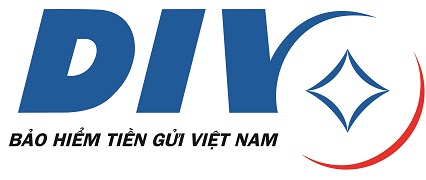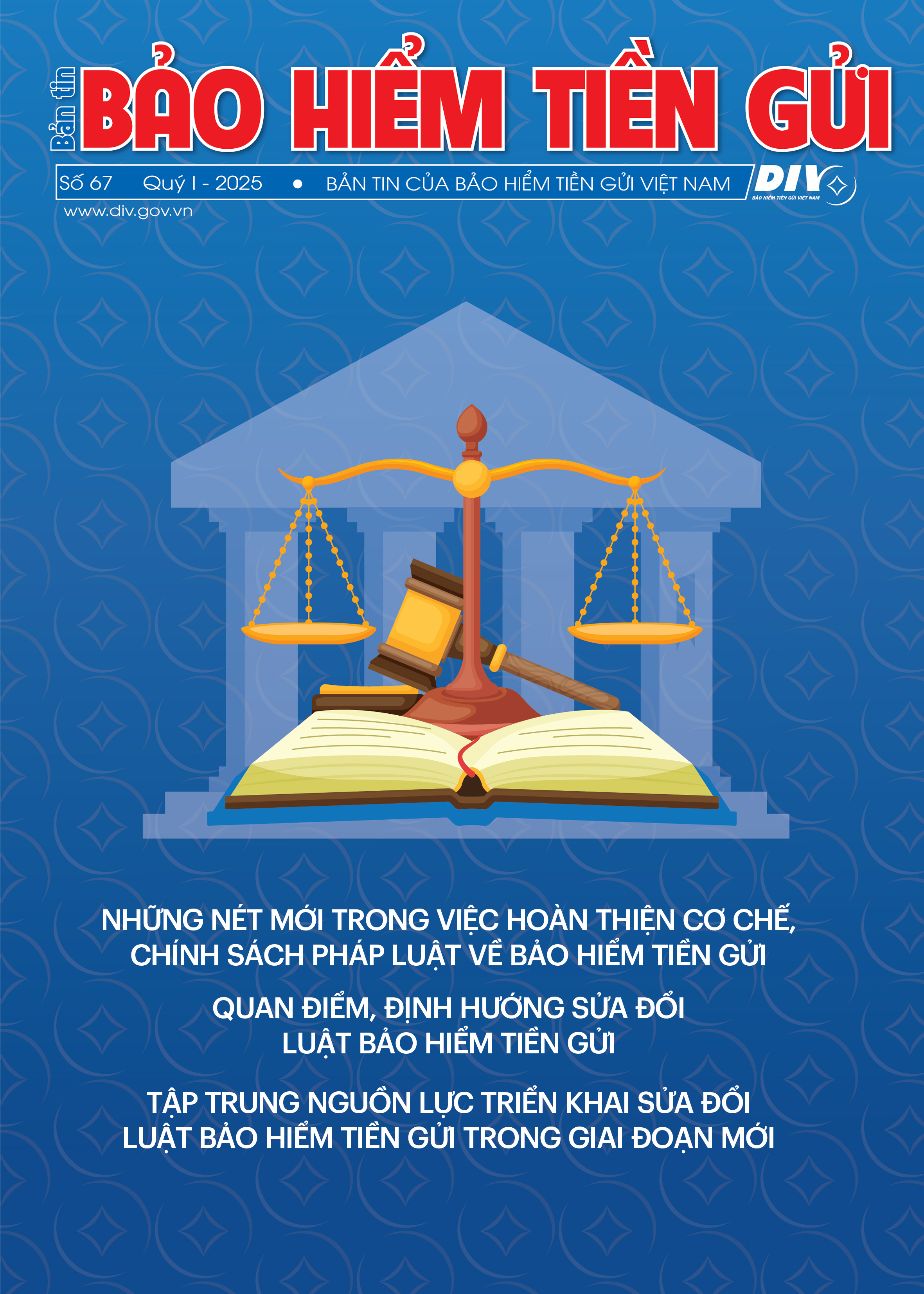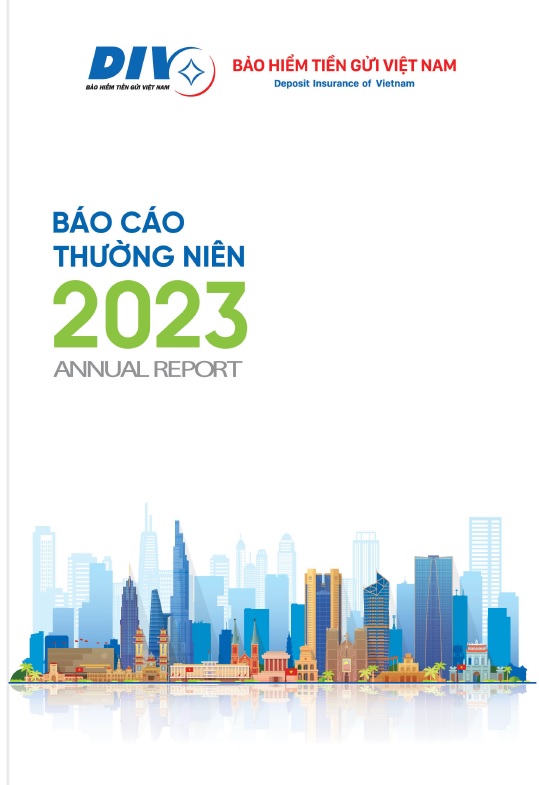Deposit insurance is a not-for-profit business
According to the International Association of Deposit Insurers (IADI), DI is defined as “a system established to protect depositors against the loss of their insured deposits in the event that a bank is unable to meet its obligations to depositors”.
In Vietnam, the Law on DI stipulates that DI means a guarantee to reimburse insured depositors up to a DI limit when an insured institution is incapable of paying deposits to depositors or bankrupt. Institutions participating in deposit insurance herein refers to credit institutions established under the Law on Credit Institutions, including commercial banks, foreign bank branches, cooperative banks, people's credit funds, and microfinance institutions.
In other words, deposit insurance is a public undertaking by the deposit insurer to return all or part of insured deposits (including principal and interest) to depositors when the insured institution is declared to be insolvent by the functional authorities or ceases its operation.
In the world, deposit insurance is often considered apublic policy, aiming at one or more various objectives, subject to certain conditions over a period of time. These objectives can be divided into 3 main groups. The first is to protect small and medium-sized depositors who have limited access to information on the operational activities of insured institutions. Deposit insurance also contributes to stabilizing the system of credit institutions. Deposit insurance is used to enhance public confidence, reduce the possibility of bank runs, develop an official mechanism to resolve troubled insured institutions, and participate in dealing with the financial crisis. In addition, deposit insurance policy contributes to building a competitive and equal market for deposit-taking institutions of different sizes and levels of development; creating conditions for defining the responsibilities and interests of depositors, deposit-taking institutions, and the government; reducing the cost of resolving bank failures as well as the financial burden on taxpayers in the event of a bank failure. To realize these public policy objectives, in most countries around the world, deposit insurers are government-affiliated organizations, operating not for profit.
In short, it can be said that deposit insurance is substantially different from commercial insurance. The main differences can be summarized as follows:
|
Criteria |
Deposit Insurance |
Commercial Insurance |
|
Operational properties |
Non-profit operation. |
Business for profit. |
|
Insurance mechanism |
Normally, credit institutions that accept deposits must participate in deposit insurance according to the mandatory mechanism prescribed by law. In Vietnam, participation in deposit insurance is compulsory for credit institutions that accept deposits. |
Voluntary, by agreement |
|
Insurance contract |
There is no insurance contract between the deposit insurer and the institution participating in deposit insurance. |
The insurance organization shall sign an insurance contract with an organization or individual that wishes to be insured. |
|
Insured object |
Subject to the legal provisions |
Subject to the agreement in the insurance contract. |
|
Insurance premium payers |
Subject to the legal regulations of each country. In Vietnam, institutions participating in deposit insurance are subject to paying deposit insurance premiums. Depositors do not have to “buy” deposit insurance, so they do not pay this premium. |
Organizations and individuals that sign insurance contracts with insurance organizations. |
|
Beneficiary of the insurance |
Subject to the legal regulations of each country. In Vietnam, the Law on Deposit Insurance stipulates that the insured depositor is an individual whose deposit is insured at a institution participating in deposit insurance. |
The person designated as the beneficiary in the insurance contract. |
Once again, deposit insurance is not an business. The implementation of deposit insurance is based on the only specialized law, the Law on Deposit Insurance, which was issued in 2012 and took effect from January 1, 2013.
Deposit insurance operations in Vietnam
The financial and monetary crisis in the Asian region since early 1997 along with the speed of global integration in the region and the world has directly affected Vietnam's financial - banking system. That posed an urgent need to strengthen public confidence in the banking system. The Law on Credit Institutions (1997) stipulates that credit institutions are responsible for participating in a deposit guarantee or insurance organization. It resulted in the establishment of a deposit insurance organization.
In that given context, the Deposit Insurance of Vietnam was established under the Decision of Prime Minister, No. 218/1999/QD-TTg, dated November 9, 1999 and officially came into operation on July 7, 2000. This is the only organization assigned legally to deploy deposit insurance activities in order to protect the legitimate rights and interests of depositors, support troubled credit institutions, control and prevent risks in banking activities in Vietnam.
The DIV was assigned with such tasks as granting, re-granting, revoking the Certificate of deposit insurance participation, calculating and collecting deposit insurance premiums, examining on-site as planned for insured institutions, and supervising off-site for all of insured institutions. When detecting problems or shortcomings, as well as risks or weaknesses from an insured institutions, the DIV reports to the State Bank of Vietnam (SBV) for timely rectification and actions.
From the initial funding and deposit insurance premiums, the DIV uses most of the fund for investment to develop its financial capacity, to readily meet the requirements of financial support or payment duties as prescribed by law. In addition, legal policies on deposit insurance are communicated and disseminated regularly to the public.
When the insured institution is troubled and placed under special control, the DIV assigns
its personnel to join the Special Control Board under the direction of the SBV. The DIV also provides special loans to support liquidity when credit institutions are at risk of insolvency, subject to special control, and threaten the whole system’s stability; buys long-term bonds of credit institutions that provide support, control, administration, and financial support to credit institutions under special control. The DIV participates in formulating and evaluating recovery plans for people's credit funds and microfinance institutions on the basis of coordinating with the Special Control Board and the Cooperative Bank. These tasks contribute to preventing risks, minimizing the risk of bank failures that are likely to cause damage to depositors, and economic and social instability. If the insured institution cannot recover and return to normal operations, still falls into insolvency or bankruptcy, the DIV will pay the deposit insurance for depositors according to the coverage limit set by the Prime Minister. After that, this organization will continue to participate in the management and liquidation of the failed insured institution and recover expenses corresponding to the amount paid for deposit insurance.
The DIV said that, after 22 years of its operation, it has a network of headquarters in Hanoi and 8 regional branches located in 8 key economic regions of the country. Up to now, the DIV has insured depositors at 1,283 insured institutions (including 97 banks and foreign bank branches, 1,181 people's credit funds, 01 cooperative bank, and 04 microfinance institutions). From the initial funding of 1 trillion dongs, as of September 30, 2021, the total asset of the DIV is nearly 80 trillion dongs, of which the Operational Reserve Fund accounts for more than 73 trillion dongs. This is a readily available resource for the DIV to reimburse depositors when required and to effectively participate in the process of restructuring the system of credit institutions.
It can be said that deposit insurance is a humanitarian policy of the Government to protect depositors, especially small-scale depositors who have little opportunities to update information on financial-banking activities. Deposit insurance has been a powerful tool in the banking sector, not only in implementing public policy objectives but also in promoting market discipline and contributing to system stability.
A deposit insurer is understood as a financial institution assigned to act as the focal point for implementing public policy on deposit insurance. In Vietnam, there is only a deposit insurer, which is the Deposit Insurance of Vietnam. This is a state-owned financial institution, operating not for profit, implementing deposit insurance policies, contributing to maintaining the stability of the system of credit institutions, and ensuring the safe and sound development of banking operations.



























